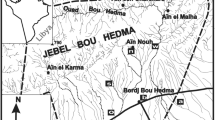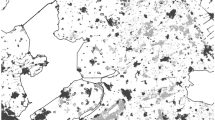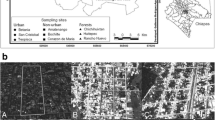Abstract
The Erňa cave, a mass winter hibernaculum and important swarming site of the common pipistrelle, Pipistrellus pipistrellus, is located in the Slovak Karst, near the Košice urban agglomeration in eastern Slovakia. Over the past two decades, the so-called invasions of this species have been observed in buildings in Košice. This unusual behaviour occurs in late summer or autumn and it is characterized by numerous accidental or unforeseen occurrences of bats in various spaces of these houses. It has been hypothesised that these events are related to bats swarming and hibernating in the Erňa cave; however, causality has not been confirmed. We measured the relative activity of bats from the end of the breeding season through the invasions and autumn swarming prior to the onset of hibernation by recording their echolocation calls on car-based transects in order to find any spatial and temporal linkage between activity in the urban area and the swarming site. Over two years we recorded 6,253 sequences with echolocation calls of P. pipistrellus and 5,239 records of other bats along four transects totalling 7,121 km in length. Spatial pattern analysis found that the city agglomeration presented a local hotspot of the species’ activity, especially during the invasion season. Multivariate generalised additive modelling confirmed an increased density of records of P. pipistrellus between the urban area and the hibernaculum in the pre-hibernation season, whereas this pattern was not found to be consistent on the control transects near the city. Contrary to that, other bat species showed little variation in their activity between transects and seasons. The obtained results suggest that the relatively short geographical distance between the urban agglomeration and the large swarming site is likely a clue to the frequent city invasions of the species, although the role of the city as a hibernation area cannot be completely omitted.





Similar content being viewed by others
Data availability
All bat recordings are available upon request to the corresponding author.
References
Abbott IM, Sleeman DP, Harrison S (2009) Bat activity affected by sewage effluent in Irish rivers. Biol Conserv 142:2904–2914
Avery MI (1991) Pipistrelle Pipistrellus pipistrellus. In: Corbet GB, Harris S (eds) The Handbook of British Mammals. Oxford University Press, Oxford, pp 124–128
Baddeley A, Rubak E, Turner R (2015) Spatial point patterns: methodology and applications with R. A Chapman & Hall Book / CRC Press, London
Barataud M (2015) Acoustic ecology for European bats. Species identification, study of their habitats and foraging behaviour [Inventaires et biodiversité series]. Biotope & Muséum national d’Histoire naturelle, Mèze & Paris
Barlow KE (1997) The diets of the phonic types of the bat Pipistrellus pipistrellus in Britain. J Zoology 243:297–609
Barlow KE, Jones G (1997) Function of pipistrelle social calls: field data and a playback experiment. Anim Behav 53:991–999
Barratt EM, Deaville R, Burland TM, Bruford MW, Jones G, Racey PA, Wayne RK (1997) DNA answers the call of pipistrelle bat species. Nature 387:138–139
Barros PA, Ribeiro C, Cabral JA (2017) Winter activity of bats in Mediterranean peri-urban deciduous forests. Acta Chiropterol 19:367–377
Bartonička T, Miketová N, Hulva P (2019) High throughput bioacoustic monitoring and phenology of the greater noctule bat (Nyctalus lasiopterus) compared to other migratory species. Acta Chiropterol 21:75–85
Bartoničková L, Reiter A, Bartonička T (2016) Mating and courtship behaviour of two sibling bat species (Pipistrellus pipistrellus, P. pygmaeus) in the vicinity of a hibernaculum. Acta Chiropterol 18:467–475
Benda P, Hulva P, Gaisler J (2004) Systematic status of African populations of Pipistrellus pipistrellus complex (Chiroptera: Vespertilionidae), with a description of a new species from Cyrenaica, Libya. Acta Chiropterol 6:193–217
Bivand R, Keitt T, Rowlingson B (2019) rgdal: Bindings for the ‘geospatial’ data abstraction library. R package version 1.4–8. https://cran.r-project.org/package=rgdal
Bivand R, Lewin-Koh N (2019) maptools: Tools for handling spatial objects. R-package version 0.9–9. https://cran.r-project.org/package=maptools
Boughey KL, Lake IR, Haysom KA, Dolman PM (2011a) Effects of landscape-scale broadleaved woodland configuration and extent on roost location for six bat species across the UK. Biol Conserv 144:2300–2310
Boughey KL, Lake IR, Haysom KA, Dolman PM (2011b) Improving the biodiversity benefits of hedgerows: How physical characteristics and the proximity of foraging habitat affect the use of linear features by bats. Biol Conserv 144:1790–1798
Bryja J, Kaňuch P, Fornůsková A, Bartonička T, Řehák Z (2009) Low population genetic structuring of two cryptic bat species suggests their migratory behaviour in continental Europe. Biol J Linn Soc 96:103–114
Budenz T, Heib S, Kusch J (2009) Functions of bat social calls: the influence of local abundance, interspecific interactions and season on the production of pipistrelle (Pipistrellus pipistrellus) type D social calls. Acta Chiropterol 11:173–182
Ceľuch M, Uhrin M, Bačkor P, Ševčík M (2016) Monitoring netopierov pomocou autotransektov – prvé výsledky zo Slovenska. Vespertilio 18:41–54
Chaverri G, Ancillotto L, Russo D (2018) Social communication in bats. Biol Rev 93:1938–1954
Davidson-Watts I, Walls S, Jones G (2006) Differential habitat selection by Pipistrellus pipistrellus and Pipistrellus pygmaeus identifies distinct conservation needs for cryptic species of echolocating bats. Biol Conserv 133:118–127
Dietz C, Nill D, von Helversen O (2009) Bats of Britain. Europe and Northwest Africa. A & C Black, London
Dumitrescu M, Orghidan T (1963) Contribution à la connaissance de la biologie de Pipistrellus pipistrellus Schreber. Ann Spéléol 18:511–517
Fenton MB (1969) Summer activity of Myotis lucifugus (Chiroptera: Vespertilionidae) at hibernacula in Ontario and Quebec. Can J Zool 47:597–602
Fenton MB (1982) Echolocation, insect hearing, and feeding ecology of insectivorous bats. In: Kunz TH (ed) Ecology of bats. Plenum Press, New York and London, pp 261–285
Feyerabend F, Simon M (2000) Use of roosts and roost switching in a summer colony of 45 kHz phonic type pipistrelle bats (Pipistrellus pipistrellus Schreber, 1774). Myotis 38:51–59
Gaisler J, Bartonička T (2010) The results of bat census in the city of Brno. In: Horáček I, Uhrin M (eds) A tribute to bats. Lesnická práce, Prague, pp 298–301
Gaisler J, Bauerová Z (1986) The life of bats in a city. Myotis 23–24:209–215
Gaisler J, Hanák V, Hanzal V, Jarský V (2003) Výsledky kroužkování netopýrů v České republice a na Slovensku, 1948–2000. Vespertilio 7:3–61
Gaisler J, Zukal J, Řehák Z, Homolka M (1998) Habitat preference and flight activity of bats in a city. J Zool 244(3):439–445
Giavi S, Glaizot O, Christe P (2020) Sex and age variation in the phenology of a common pipistrelle bat (Pipistrellus pipistrellus) population in front of a hibernaculum. Acta Chiropterol 22:113–120
Gili F, Newson SE, Gillings S, Chamberlain DE, Border JA (2020) Bats in urbanising landscapes: habitat selection and recommendations for a sustainable future. Biol Conserv 241:108343
Glover AM, Altringham JD (2008) Cave selection and use by swarming bat species. Biol Conserv 141:1493–1504
Hale JD, Fairbrass AJ, Matthews TJ, Sadler JP (2012) Habitat composition and connectivity predicts bat presence and activity at foraging sites in a large UK conurbation. PLoS One 7:e33300
Hanzal V, Kříž K (2017) Masové zimoviště netopýra hvízdavého (Pipistrellus pipistrellus) v obtokovém kanálu vodního díla Slapy (Chiroptera: Vespertilionidae). Lynx ns 48:203–206
Hijmans RJ (2020) raster: Geographic data analysis and modeling. R package version 3.0–12. https://cran.r-project.org/package=raster
Horáček I, Hanák V, Gaisler J (2000) Bats of the Palearctic region: a taxonomic and biogeographic review. In: Wołoszyn BW (ed) Proceedings of the VIIIth EBRS Vol. 1, Approaches to biogeography and ecology of bats. Chiropterological Information Center & Institute of Systematics and Evolution of Animals PAS, Kraków, pp 11–157
Horáček I, Jahelková H (2005) History of the Pipistrellus pipistrellus group in Central Europe in light of its fossil record. Acta Chiropterol 7:189–204
Hulva P, Horáček I, Strelkov PP, Benda P (2004) Molecular architecture of Pipistrellus pipistrellus/Pipistrellus pygmaeus complex (Chiroptera: Vespertilionidae): further cryptic species and Mediterranean origin of the divergence. Mol Phyl Evol 32:1023–1035
Ignaczak M, Postawa T, Lesiński G, Gottfried I (2019) The role of autumnal swarming behaviour and ambient air temperature in the variation of body mass in temperate bat species. Hystrix, Ital J Mammal 30:65–73
Jung K, Threlfall CG (2018) Trait-dependent tolerance of bats to urbanization: a global meta-analysis. Proc R Soc b: Biol Sci 285:20181222
Kaňuch P, Fornůsková A, Bartonička T, Bryja J, Řehák Z (2010) Do two cryptic pipistrelle bat species differ in their autumn and winter roosting strategies within the range of sympatry? Folia Zool 59:102–107
Kaňuch P, Janečková K, Krištín A (2005) Winter diet of the noctule bat Nyctalus noctula. Folia Zool 54:53–60
Korsten E, Jansen EA, Boonman M, Schillernans M, Limpens HJGA (2016) Swarm and switch: on the trail of the hibernating common pipistrelle. Bat News 110:8–10
Kretzschmar F, Heinz B (1995) Social behaviour and hibernation of a large population of Pipistrellus pipistrellus (Schreber, 1774) (Chiroptera: Vespertilionidae) and some other bat species in the mining-system of a limestone quarry near Heidelberg (South West Germany). Myotis 32–33:221–229
Kucková K (2018) Aktivita netopierov v urbánnom prostredí. Diplomová práca, Univerzita P, J. Šafárika v Košiciach
Kusch J, Schmitz A (2013) Environmental factors affecting the differential use of foraging habitat by three sympatric species of Pipistrellus. Acta Chiropterol 15:57–67
Lintott PR, Barlow K, Bunnefeld N, Briggs P, Gajas Roig C, Park KJ (2016) Differential responses of cryptic bat species to the urban landscape. Ecol Evol 6:2044–2052
Lundy M, Montgomery I (2010) Summer habitat associations of bats between riparian landscapes and within riparian areas. Eur J Wildl Res 56:385–394
Matis Š (1997) Nepozvaní hostia. Trúlelek, 2:sine pag
Matis Š (1998) Nové poznatky o letnom výskyte netopierov na území Košickej kotliny. Natura Carpatica 39:251–262
Matis Š, Uhrin M, Pjenčák P (2002) Zimovanie Netopierov v Jaskyni Erňa. Vespertilio 6:235–236
Maxinová E, Kipson M, Naďo L, Hradická P, Uhrin M (2016) Foraging strategy of Kuhl’s pipistrelle at the northern edge of the species distribution. Acta Chiropterol 18:215–222
Mayer F, von Helversen O (2001) Sympatric distribution of two cryptic bat species across Europe. Biol J Linn Soc 74:365–374
Meyer D, Zeileis A, Hornik K (2020) vcd: visualizing categorical data. R package version 1.4–6. https://cran.r-project.org/package=vcd
Middleton N, Froud A, French K (2014) Social calls of the bats of Britain and Ireland. Pelagic Publishing, Exeter
Nagy ZL, Postawa T (2011) Seasonal and geographical distribution of cave-dwelling bats in Romania: implications for conservation. Anim Conserv 14:74–86
Nagy ZL, Szántó L (2003) The occurrence of hibernating Pipistrellus pipistrellus (Schreber, 1774) in caves of the Carpathian Basin. Acta Chiropterol 5:155–160
Nicholls B, Racey PA (2006) Habitat selection as a mechanism of resource partitioning in two cryptic bat species Pipistrellus pipistrellus and Pipistrellus pygmaeus. Ecography 29:697–708
Nusová G, Fulín M, Uhrin M, Uhrovič D, Kaňuch P (2019a) Spatiotemporal pattern in autumn invasion behaviour of the common pipistrelle, Pipistrellus pipistrellus: review with a case study. Mammal Biol 97:13–21
Nusová G, Šemeláková M, Paučulová L, Uhrin M, Kaňuch P (2017) Haplotype diversity in common pipistrelle’s mass hibernacula from central Europe. Biologia 72:548–553
Nusová G, Uhrin M, Hološková A, Kaňuch P (2019b) The first breeding records of Pipistrellus nathusii in Slovakia (Chiroptera: Vespertilionidae). Lynx ns 50:109–112
Nusová G, Uhrin M, Kaňuch P (2019c) Go to the city: urban invasions of four pipistrelle bat species in eastern Slovakia. Eur J Ecol 5:23–26
Nusová G, Uhrin M, Voigt CC, Kaňuch P (2020) Tracing the geographic origin of common pipistrelles (Pipistrellus pipistrellus) swarming at a mass hibernaculum. Mammal Biol 100:601–610
Nystrom GS, Bennett VJ (2019) The importance of residential swimming pools as an urban water source for bats. J Mammal 100:394–400
Palášthy J (1988) Výsledky obrúčkovania netopierov (Chiroptera) v okrese Prešov (východné Slovensko). Zbor Východoslov Múz v Košiciach, Prír Vedy 28(1987):91–108
Palášthy J, Gaisler J (1965) K otázce tak zvaných invazí a zimních kolonií netopýra hvízdavého (Pipistrellus pipistrellus Schreber, 1774). Zool Listy 14:9–14
Park KJ, Altringham JD, Jones G (1996) Assortative roosting in the two phonic types of Pipistrellus pipistrellus in the mating season. Proc R Soc London Biol Sci 268:1825–1832
Parsons KN, Jones G, Greenaway F (2003) Swarming activity of temperate zone microchiropteran bats: effects of season, time of night and weather conditions. J Zool 261:257–264
R Core Team (2020) R: A language and environment for statistical computing. R Foundation for Statistical Computing, Vienna
Ransome R (1990) The natural history of hibernating bats [Christopher Helm Mammal Series]. Christopher Helm, London
Roche N, Langton S, Aughney T, Russ J, Marnell F, Lynn D, Catto C (2011) A car-based monitoring method reveals new information on bat populations and distributions in Ireland. Anim Conserv 14:642–651
Rodríguez-Aguilar G, Orozco-Lugo CL, Vleut I, Vazquez L-B (2017) Influence of urbanization on the occurrence and activity of aerial insectivorous bats. Urban Ecosyst 20(2):477–488
Russo D, Jones G (2002) Identification of twenty-two bat species (Mammalia: Chiroptera) from Italy by analysis of time-expanded recordings of echolocation calls. J Zool 258:91–103
Russo D, Ancillotto L (2015) Sensitivity of bats to urbanization: a review. Mammal Biol 80:205–212
Rydell J, Nyman S, Eklöf J, Jones G, Russo D (2017) Testing the performances of automated identification of bat echolocation calls: a request for prudence. Ecol Indic 78:416–420
Rydell J, Racey PA (1995) Street lamps and the feeding ecology of insectivorous bats. Symp Zool Soc London 67:291–307
Sachteleben J (1991) Zum Invasions verhalten der Zwergfledermaus (Pipistrellus pipistrellus). Nyctalus (N. F.) 4:51–66
Sachteleben J, von Helversen O (2006) Songflight behaviour and mating system of the pipistrelle bat (Pipistrellus pipistrellus) in an urban habitat. Acta Chiropterol 8:391–401
Sattler T, Bontadina F, Hirzel AH, Arlettaz R (2007) Ecological niche modelling of two cryptic bat species calls for a reassessment of their conservation status. J Appl Ecol 44:1188–1199
Schmidbauer P, Denzinger A (2019) Social calls of Myotis nattereri during swarming: call structure mirrors the different behavioral context. PLoS One 14:e0221792
Sendor T, Kugelschafter K, Simon M (2000) Seasonal variation of activity patterns at a pipistrelle (Pipistrellus pipistrellus) hibernaculum. Myotis 38:91–109
Sendor T, Simon M (2003) Population dynamics of the pipistrelle bat: effects of sex, age and winter weather on seasonal survival. J Anim Ecol 72:308–320
Simberloff D, Martin J-L, Genovesi P, Maris V, Wardle DA, Aronson J, Courchamp F, Galil B, García-Berthou E, Pascal M, Pyšek P, Sousa R, Tabacchi E, Vilà M (2013) Impacts of biological invasions: what’s what and the way forward. Trends Ecol Evol 28:58–66
Simon M, Hüttenbügel S, Smit-Viergutz J (2004) Ecology and conservation of bats in villages and towns [Schriftenreihe für Landschaftspflege und Naturschutz, Heft 77]. Bonn & Bad Godesberg
Speakman JR (1991) Why do insectivorous bats in Britain not fly in daylight more frequently? Funct Ecol 5:518–524
Stone EL, Harris S, Jones G (2015) Impacts of artificial lighting on bats: a review of challenges and solutions. Mammal Biol 80:213–219
Šuba J, Vintulis V, Pētersons G (2010) Body weight provides insights into the feeding strategy of swarming bats. Hystrix, Ital J Mammal 22:179–187
Todd VLG, Waters DA (2017) Small scale habitat preferences of Myotis daubentonii, Pipistrellus pipistrellus, and potential aerial prey in an upland river valley. Acta Chiropterol 19:255–272
Todd VL, Williamson LD (2019) Habitat usage of Daubenton’s bat (Myotis daubentonii), common pipistrelle (Pipistrellus pipistrellus), and soprano pipistrelle (Pipistrellus pygmaeus) in a North Wales upland river catchment. Ecol Evol 9:4853–4863
Uhrin M (1995) The finding of a mass winter colony of Barbastella barbastellus and Pipistrellus pipistrellus (Chiroptera, Vespertilionidae) in Slovakia. Myotis 32–33:131–133
Uhrin M, Hüttmeir U, Kipson M, Estók P, Sachanowicz K, Bücs S, Karapandža B, Paunović M, Presetnik P, Bashta A-T, Maxinová E, Lehotská B, Lehotský R, Barti L, Csösz I, Szodoray-Parádi F, Dombi I, Görföl T, Boldogh SA, Jére C, Pocora I, Benda P (2016) Status of Savi’s pipistrelle Hypsugo savii (Chiroptera) and range expansion in Central and south-eastern Europe: a review. Mammal Rev 46:1–16
Vandevelde J-C, Bouhours A, Julien J-F, Couvet D, Kerbiriou C (2014) Activity of European common bats along railway verges. Ecol Eng 64:49–56
van Schaik J, Janssen R, Bosch T, Haarsma AJ, Dekker JJA, Kranstauber B (2015) Bats swarm where they hibernate: compositional similarity between autumn swarming and winter hibernation assemblages at five underground sites. PLoS One 10:e0130850
Vaughan N, Jones G, Harris S (1997) Habitat use by bats (Chiroptera) assessed by means of a broad-band acoustic method. J Appl Ecol 34:716–730
Verboom B, Huitema HH (2010) The influence of treeline structure and wind protection on commuting and foraging common pipistrelles (Pipistrellus pipistrellus). Lutra 53(2):63–80
Warren RD, Waters DA, Altringham JD, Bullock DJ (2000) The distribution of Daubenton’s bats (Myotis daubentonii) and pipistrelle bats (Pipistrellus pipistrellus) (Vespertilionidae) in relation to small-scale variation in riverine habitat. Biol Conserv 92:85–91
Wood SN (2011) Fast stable restricted maximum likelihood and marginal likelihood estimation of semiparametric generalized linear models. J R Stat Soc Ser B Stat Methodol 73:3–36
Wood S (2019) mgcv: Mixed GAM computation vehicle with automatic smoothness estimation. R-package version 1.8–28. https://cran.r-project.org/package=mgcv
Zahn A, Kriner E (2016) Winter foraging activity of central European vespertilionid bats. Mammal Biol 81:40–45
Zuñiga-Palacios J, Zuria I, Castellanos I, Lara C, Sánchez-Rojas G (2021) What do we know (and need to know) about the role of urban habitats as ecological traps? Systematic review and meta-analysis. Sci Total Environ 780:146559
Acknowledgements
Three anonymous reviewers are acknowledged for highly valuable comments and suggestions which helped to improve previous version of this paper.
Funding
The research was funded by the Scientific Grant Agency VEGA (1/0298/19) and by the Slovak Research and Development Agency (APVV-17–0116).
Author information
Authors and Affiliations
Contributions
GN, MU, and PK made conception and study design. GN collected data in the field and determined bat calls. PK performed data analysis. MU, PK and GN drafted the manuscript. All authors commented on previous versions and approved the final manuscript.
Corresponding author
Ethics declarations
Ethics approval and consent to participate
Not applicable.
Consent for publication
All authors agreed with the content and all gave explicit consent to submit.
Conflict of interest
The authors declare that they have no competing interests.
Rights and permissions
About this article
Cite this article
Uhrin, M., Nusová, G. & Kaňuch, P. Linking activity of common pipistrelles, Pipistrellus pipistrellus, in an urbanised area with a nearby mass swarming site. Urban Ecosyst 25, 1125–1135 (2022). https://doi.org/10.1007/s11252-022-01222-x
Accepted:
Published:
Issue Date:
DOI: https://doi.org/10.1007/s11252-022-01222-x




